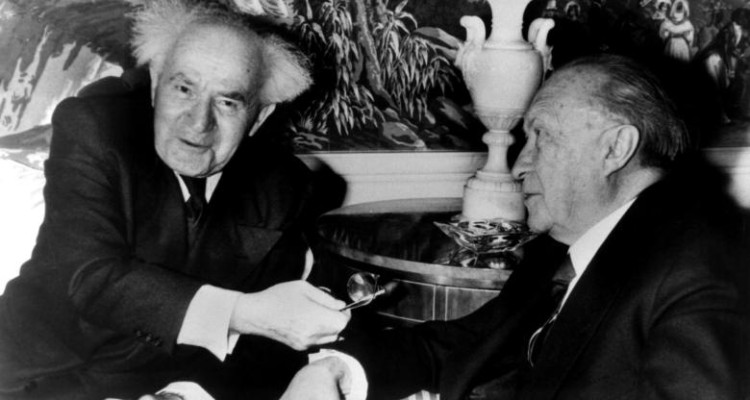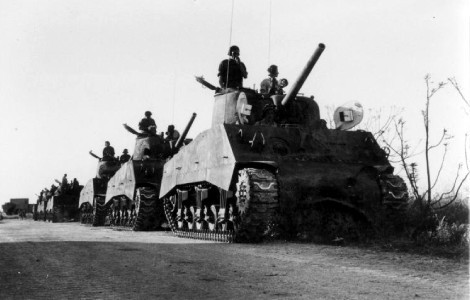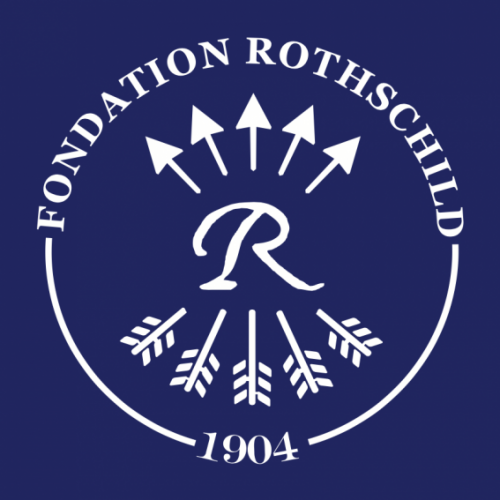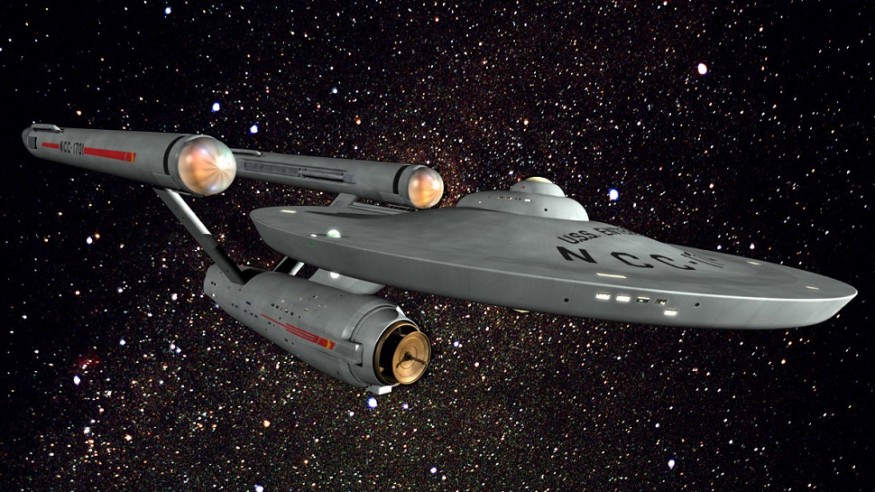
Henri Hayon was a small-time theater actor. He acted little and only in plays of no interest, fourth-rate roles in dingy neighborhood theaters. His greatest claim to fame (judging from comments made by a number of strangers over the years) was his resemblance to a famous American movie star (Kevin Spacey, if you must know). One day, when he thought he had hit rock-bottom, his career in shambles and his family life adrift, an extraordinary thing happened. An email suddenly appeared in his inbox, and offered to cast him in a great classic of the repertoire, in the greatest theatre, staged by the greatest director of his times. It was a small part, to be sure. But this time, he felt that he too would have a chance to shine among the stars scattered on the bill. This immaterial manna, he knew it, was the role of his life.
Understandably, Hayon was therefore feverish. But not because of the prestige of the theater, or of the director’s reputation as a tyrannical genius, or even because of the celebrity of the other artists. Besides, Hayon had never been seduced by notoriety or been a great admirer of stars. On the contrary, what had always fascinated him were the lesser roles, down to the extras to whom he devoted an affection that some considered almost excessive.
His passion for obscure actors and insignificant roles had recently been enriched by a new revelation. It happened shortly before the miracle of the small part in the great play, and, while he was an atheist, he now saw it as a sign, a sort of retroactive premonition. Was it too late? No matter; he had no time to worry about so little. Yet, the incident still haunted him.
One day, a little by chance and a lot by idleness, he came across the second episode of the latest avatar of the Star Trek franchise, Star Trek: Picard. Although he had always had a soft spot for science-fiction, especially intergalactic epics, he had never been a fan of this cult series, which, while he didn’t despise it, had always left him strangely indifferent. It attracted him from too faraway, and he resisted without being able to grasp the reasons for his reticence. As a child, he only watched intermittently the exploits of Captain Kirk and his famous first mate, Spock. The original series of the 1960s, which had never captivated him enough to follow it the way he revered Grendizer. As a teenager, he’d make fun of it, like everyone else, but there too, only nonchalantly. Finally, he had long forgotten it when it resurfaced in his adult life — which was also his acting life.
By then he was (as we mentioned) at his lowest ebb, had lost sleep, and dreaded the night. One evening when anguish was particularly stubborn, galvanized by an unsuccessful quest in the limbo of Netflix, he stopped, for lack of anything better, on Star Trek: The Next Generation. It was a reboot of sorts of the original series where Jean-Luc Picard was taking over, a century later, from Captain James T. Kirk. From this series, he expected nothing. It was a miracle, too. Its soporific virtues delighted him. To be sure, it wasn’t the first time that a Star Trek film had put him to sleep. But this time, he thought, it had nothing to do with the boredom that had enervated him when, for his thirteenth birthday, his mother had taken him and a few friends to the local movie theater, The Three Secrétan, to see The Search for Spock. On the other hand, each episode of The Next Generation, without amazing him, moved him with its kitsch and its naivety, and lulled him to sleep, always after twenty minutes, irrevocably, absolutely soothed. One evening, however, he forgot to watch it, probably distracted by something else, and then failed to overcome his laziness of reconnecting.
*
Star Trek had long since left the sphere of his habits when it suddenly reappeared on his screen. The episode of Star Trek: Picard that had just begun caught his attention immediately by its title: “Maps and Legends.” Hayon knew nothing about this brand new series and he was even irritated by the producers’ relentlessness in inventing new ones. When he had started to watch The Next Generation, he had done some research on the history of the Star Trek franchise and had discovered it was composed of six or seven series spread out over more than a half-century. With The Next Generation, he understood the intention of reviving a cult series for, precisely, a new generation of viewers. For Deep Space Nine, he conceived the desire to expand while enriching the stories with a spiritual dimension that had so far been repressed. But for the other series, with the possible exception of Voyager, which for the first time put a woman at the helm, Hayon had found futile the proliferation of “sequels” and “prequels” (words he found abominably comical) that stubbornly tried to fill the void of space and time before and after, all around the original story.
The very thought of exploring this nebula made him feel dizzy as he would have felt, he told himself with an irreverent smile, if he had ever thought to someday understand the principle of tikkun olam, the repairing g of the world, which a mystical old aunt had tried to explain to him when he was a child by showing him a splendid copy of the Zohar she was secretly reading (one day, she would give it to him but he had to promise to not open it until he was forty because, she added with many a wink, it could make you loco). All that Hayon had recalled of tikkun olam, was that the original universe, perfect, just and merciful, hadn’t endured God’s withdrawal. The world had been shattered and, ever since, it was up to people, through their righteous actions, to gather all of its sparkling fragments, and put it back together. “You see,” his beloved aunt told him, “the kabbalah has thought of everything! Even of the Big Bang and how we can respond to it, us, little less than nothing in the infinity!” But the old lady had once decided to travel the world alone and had taken her Zohar with her. Hayon vaguely remembered that she had eventually sent it to him from Buenos Aires, but he’d forgotten if the book had disappeared along the way or if it was him who had lost it. In any case, he had never had the courage nor the will to go further in these reveries.
This is what he thought about as he watched the first minutes of this episode of Picard. After all, this too was a story of return and memories. “Remembrance” was even the title of the series pilot that outlined the ties with The Next Generation. Twenty years after his last mission, Admiral Picard was in retirement on his native land, the family estate of Château Picard in La Barre, Burgundy. He had returned to Earth to work the land, his homeland, but would soon leave it again, return to service, and begin crisscrossing space in pursuit of truth and justice while fighting the murderous plots of the Romulans, sworn enemies of the United Federation of Planets, and their android allies. Hayon recognized this story. It was repeating the motif of the Odyssean return to the land of origin, an illusory return, either because there are too many obstacles, or because there is no origin, or because, in the end, once we have returned something or someone attracts us or sends us elsewhere.
Despite this, he agreed to play along, idly watching the hero wander through the exotic environment of his native land. But he was struggling to keep up with him and was about to abandon him to his fate when he suddenly jumped out of his chair. The doctor whom Picard had come to see to get checked out in order to be reinstated at the helm of a Starfleet ship, that old friend he had met more than half a century before aboard the Stargazer, was named Moritz Benayoun. “Benayoun?!” exclaimed Hayon. His astonishment was twofold. First, Star Trek suggested that, in less than four centuries, the Jews of the future would include space Sephardim. But above all, he was amazed that this Dr. Benayoun had the same name as he did. Or rather, the name that, more or less, he could have had.
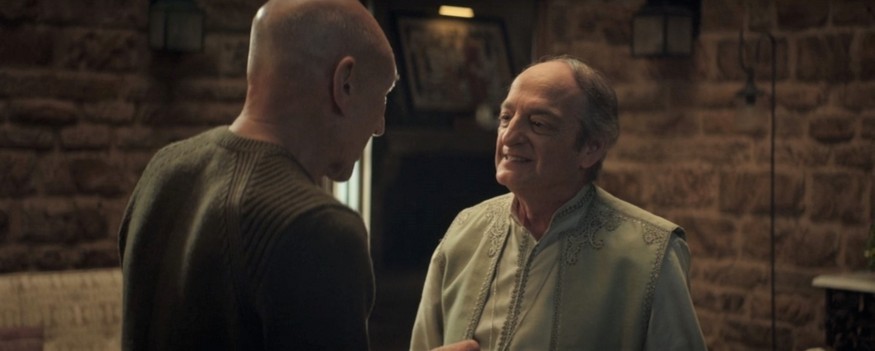
*
This ephemeral character from the distant future had reminded him that one of his ancestors had once decided to change his surname.
It was not clear why, several hypotheses were circulating and sometimes bitterly divided different branches of the family. Some thought that this Jacques Ayoun had changed his name when he left his native town of Taza to emigrate to France, for rather shady reasons which, in some versions, involved an obscure relationship with an Arab woman, and her brothers’ determination to avenge the family honor. Others believed that Ayoun had changed his name to improve his chances of passing the Ecole des Mines exam. If that had been the case, he would have been the first Moroccan (or at least the first Maghrebi resident) to enter the prestigious engineering school. Ayoun was perhaps too pronounced, even if there was a great beauty in this Berber variant of the Hebrew hayim and the Arabic hayy (or haya), and that it recalled the proximity between Jews and Arabs, a proximity that sometimes led some people to confusion, misunderstandings, and equivocation. However, whether Ayoun evoked Hebrew or Arabic, one thing was certain and everyone agreed: it did not sound French enough. The proof was that the grandfather had (as he bitterly pointed out) failed all the admission exams: École Normale Supérieure (although he read a lot), Polytechnique (although he was exceptionally gifted in mental arithmetic and boasted a long experience as a pharmacy assistant), and even Saint-Cyr (he dreamed of being an officer in honor of his father, who had once been a clerk in a military hospital in Rabat). Les Mines was his last chance (and the best one, since, after all, he was a genius tinkerer), or the last chance that he, as a French citizen, gave to the “elitist but fair” system inspired by “the Republican ideal.”
Then this grandfather had a brilliant idea. He transformed Ayoun into Hayon. While Ayoun closed doors, or slammed them in one’s face, Hayon, in its ironic and providential homonymy, would open them gently. But another legend (a rumor that was passed nonchalantly from generation to generation) was that the idea of converting Ayoun into Hayon had its origin in the mispronunciation of a butcher. As a child, this parent would go to the local French butcher’s shop two or three times a week to get meat and would be greeted each time by the owner with a “Ah, here is Mrs. Hayon’s son,” with a blank face and a tone that had always seemed malicious to him. Confused, the child did not dare to correct but wondered what could have caused such a mangling of his name. Ayoun, I-oone, it was not that difficult to utter. Then one day, when he went to the shop with his mother, he heard her tell the saleswoman that the order she was placing was in the name of “Mrs. Hayon.” It is said that he was never to learn whether this transmutation (a kind of translation in every sense of the word) had originated in some shame (a shame he himself had felt for the first time that day), or whether it was due to a desire to simplify the transaction. Whatever the case, the idea was now well established and would germinate for years to come.
A bit like the illness that Dr. Benayoun had just revealed to Admiral Picard. The doctor had indeed just discovered a rare disorder in the hero’s parietal lobe. This mysterious illness had already been evoked in the last episode of Star Trek: The Next Generation, where Picard had found himself detached from time, at once in the present, the past and the future. The faithful Dr. Crusher told Picard that he was likely suffering from “irumodic syndrome,” a degenerative and incurable brain disease due to the degradation of neuronal pathways, causing confusion and hallucinations, and potentially fatal. But if Hayon was very disturbed by this revelation, he could not dwell on it, too moved to have discovered in Benayoun a kind of mentor to come, so moved that he decided to make David Paymer (the actor who played him) a kind of intimate hero. He was a character actor, one of those who, as they say, have “a mug.” Hayon began to think that he had yet to make a face of his own, a face that was still not familiar to anyone.
*
The revelation of Moritz Benayoun had so marked him at the time that he began to obsess, almost to delirium. For example, in “Star Trek” and “Starfleet” he heard names that spoke of space and stars with Ashkenazi overtones, whether those stars were of David or Hollywood. Hollywood, where David Paymer was not a person without being a person. His name was not engraved in brass in a large pink five-pointed star on a square of black terrazzo on the sidewalks of the Hollywood Boulevard Walk of Fame. But he was still known in the business, had worked with the greatest, and received several Golden Globe and Oscar nominations. What fascinated Hayon the most was that television made in Hollywood, which was not afraid to show Jewish Jews or invisible Jews, but still always Ashkenazi, decided to show an innocuous Sephardic Jew in the distant future.
He did his research and discovered that the script for this episode had been written by Akiva Goldsman and Michael Chabon. Chabon, he knew. He was the author of The Extraordinary Adventures of Kavalier and Clay, the story of two teenage Jewish cousins, an American from Brooklyn and a Czech from Prague, who just before, during and after World War II create comic books whose hero (“The Escape Artist”) fights Nazism in all its forms. In this fiction, many will have recognized a tribute to Joe Shuster and Jerry Siegel, the young creators of Superman, and to all the other Jewish comic book artists, from Stan Lee to Jack Kirby. Those who couldn’t help but wonder why so many Jews are behind so many superheroes might remember that Superman is a Golem, that superheroes are fantasies of guardian angels fighting against pogroms and genocidal monsters. But again, all this belongs to the world of the Ashkenazi. And this is why Benayoun’s appearance under the pen of Chabon and Goldsman was even more precious (and also more mysterious).
Hayon searched in vain on the Internet for the origin of the idea to make a Sephardic man appear in the future of Star Trek, and with the name Moritz Benayoun. He wondered if the screenwriters had thought of Maurice Benayoun, known as MoBen, the digital artist, explorer of Open Media Art, practitioner of virtual reality and artificial intelligence. Perhaps they were impressed by his Quarxs, invisible beings that defy all the laws of science and nature that MoBen had imagined and created in 3D (perhaps for the first time ever) in collaboration with the science fiction comic book authors Schuiten and Peeters. The Quarxs were the Shadoks of the end of the millennium; the Shadoks who, as a child, had obsessed him with their Cosmopump and their obsession with building a rocket to reach the Earth, and whom he would find again many years later with even more confusion in the names of Shylock and Sherlock… Aware that he was going astray in imagining the influence on the Shadoks of Saul Steinberg, the famous illustrator of The New Yorker, he abandoned his research. In the end, what mattered to him was that in Moritz Benayoun he heard echoes of Eastern Europe (especially Germany), France, and the Maghreb coexisting. He heard the promise of the future of a familiar name, a portmanteau name that ignored borders, like that future world where, in Star Trek, all races coexisted in peace (on Earth at least), a true cosmopolitan name — ideal for making your way through the stars.
“Star Trek”, after all, is the “Walk among the Stars.” That’s what Hayon told himself, even though he knew that trekking should be called “Randonnée” (or “hike” in French), but he found this activity too vulgar, without really knowing why, perhaps because he saw it as an obscene parody of the Exodus or, worse, of the Wandering Jew. In short, Moritz Benayoun, at once German and French, Ashkenazi and Sephardic, Arab and Berber, was for him the Jew of the cosmos. Of the cosmos understood as both the world and the universe. Of the cosmos where one could believe that there are no strangers since everyone is part of it. But this would be a mistake. The differences survive the darkness of the nothingness. The future promises the erasure of borders and races on Earth. It is the non-Earthlings who will then become, exclusively, the strangers. Space is not the “frontier of infinity” as the French version of the preamble to each episode of Star Trek has so nicely mistranslated; it is “the final frontier.” The purpose of Star Trek, in its original version, is to explore strange worlds, to go in search of new life and new civilizations, to go where no one has gone before.
In other words, to go toward the foreigner. The stranger who no longer exists on Earth, and who, as the light-years pass, we will discover to be hostile, like the Romulans and the Klingons, or benevolent, like the Vulcans. The stranger will still be the one who, beyond the stars, will still give meaning to race-mixing. Hayon thought, for example, of Spock, born of a Vulcan father and a human mother. Spock, the primordial mixed-race of space, to whom Leonard Nimoy lends his body and attributes the iconic gesture of this Walk among the Stars, the famous Vulcan salute accompanied by the formula: “Live long and prosper.” The sign and the greeting are so famous that they have become an acronym and an emoji, but how many people know that Nimoy did not invent this hand sign but repeated it, inspired by the gesture of the Cohen pronouncing the birkat haKohanim, the protective blessing recited on major Jewish holidays but also on Friday evenings by parents for their children, or even before a long journey?
*
Had the birkat haKohanim been recited for the crew of the Nostromo, their interstellar journey might not have turned out so badly. Perhaps, on their way to Earth, Mother, the onboard computer, would not have diverted the cargo ship from its course. But just as a ship’s duty at sea is to rescue a vessel in distress, the Nostromo’s priority was to explore any planet that showed signs of life, such as this dark and desolate exomoon located more than half a century away from Earth. But it is death, as we know, that the Nostromo people will find there. Death incarnated by the absolute stranger, the xenomorph, the alien. Hayon had seen Ridley Scott’s masterpiece at least eight times, and it was only recently, during his wanderings in search of everything he could glean about Moritz Benayoun, that a new revelation had bluffed him. Yaphet Kotto, who plays Parker, the chief engineer, the only black man on the crew, the one who saves Ripley’s life when she is attacked by Ash, the villainous android, Parker who will be the creature’s last victim before the heroine gets rid of it once and for all, Yaphet Kotto was Jewish. The French Wikipedia page doesn’t say so, and his obituary in Libération only mentions it in passing. But for Hayon, it was not anecdotal. In Live or Let Die, where he played James Bond’s first black antagonist, Kotto was seen as a Caribbean tyrant, and in Raid on Entebbe, he replicated the opaque role of Ugandan dictator Idi Amin Dada in the taking of Jewish and Israeli hostages by Palestinian terrorists. In Alien, Hayon admired Kotto’s presence but saw him as just another black victim of Hollywood’s sacrificial impulses.
He was ashamed of his mistake. Kotto was not a “small actor.” Trained at the Actors Studio in New York, he had played alongside and at the level of the greats. But above all, he was not the man his well-conditioned eyes had led him to see. Kotto’s Jewishness had always been so present in him that he told anyone who would listen that he would have become a rabbi if he had not embraced the acting vocation. He had read so many holy books in Hebrew that he opened any book from the back. All this was thanks to his father, Avraham Kotto, born Njoki Manga Bell. He had told him that, as a descendant of the royal family of Cameroon, he had converted to Judaism and changed his name by immigrating to the United States in the Roaring Twenties. Elsewhere, Hayon had read that he was already Jewish when he arrived, that he spoke Hebrew, and that he told his son that their origins also traced to African Jews from Israel who had migrated to Cameroon through Egypt. Once, young Yophet even met Malcolm X in Harlem who, upon learning his name and background, told him that he was the original Jew. However, Kotto never played Jewish characters. After Alien, although Parker was his favorite role, he refused to be typecast in similar roles. He turned down the character of Lando Calrissian in Star Wars because he didn’t want to be killed on screen again. But he would also reject the role of Jean-Luc Picard in Star Trek. This decision, he said he always regretted.
Hayon too, in a way.
He imagined this meeting between Kotto-Picard and Paymer-Benayoun, the African Hebrew of yesteryear and the German-Maghrebi of years to come. And even today, he imagined these Jews of the future. He imagined them, these Jews of the cosmos, of all colors, of all horizons. Among the stars, they sounded familiar.

